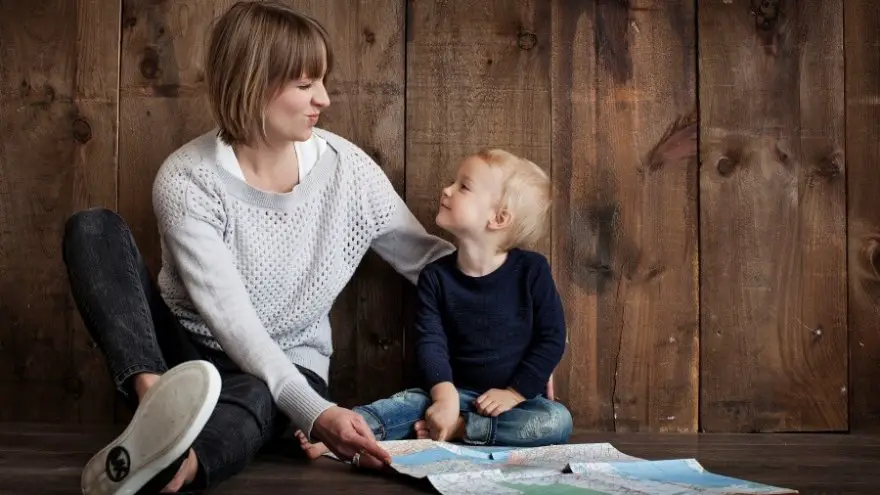The Importance of Saying “No” to Your Kids

Every parent remembers the nervousness that comes with the excitement of having a cute little bundle of joy to raise and frankly, that growing sense of anticipation takes a while to get rid of. Whether you’re a first-time parent or if you’re now making new additions to your family, one thing is for sure: you should decide on your approach regarding how you will be educating them as they grow up.
Childhood as we know it is an exciting time and it’s the period when a child learns the most things that help get them a good start in life, such as how to identify what their body needs, how to improve and learn different skills and how to socialize, to name only a few things. However, the way their attitude and personality is shaped by the received education affects all those learning processes in a great manner. So, for a harmonious development, parents need to have at least somewhat of an idea on how to properly educate their children. Something every parent needs to comprehend and get the hang of is how to say “no” to their child.
 There are two major aspects of beginning to teach a child that they have to answer to at least some form of authority, regardless of whether they like the idea of not being allowed to have everything their way or not.
There are two major aspects of beginning to teach a child that they have to answer to at least some form of authority, regardless of whether they like the idea of not being allowed to have everything their way or not.
The first aspect is obviously finding how to start saying No and most importantly when to do so in order to avoid creating tension in the household or even just between you and your child, as well as to avoid building up different forms of grudges for the child. No parent wants to become “the bad guy” in their child’s eyes, and this is exactly what we’ll help you avoid!
The second aspect is all about keeping restrictions equal and transparent in the case of siblings with or without age gaps. Children have a tendency to get jealous over the smallest things by nature and it’s best to avoid little strains on your relationship if you’re able to.
First off, we’ll address the first aspect of how to go about setting restrictions to a child, how they should be worded and when you should get more or less strict about these permissions.
The “How and When”
The way you say “no, you cannot do X” has to be gentle enough to not make the child feel like you are increasingly shooting their ideas down, nor that you are forbidding them from doing things just for the sake of punishing them.
On the other hand, you cannot be too gentle and lenient either, as they may not take you seriously. Children learn by exploring as they’re driven by curiosity, it’s only natural for them to try to test the limits you set in order to discover how serious the interdiction is or what happens if they go against your word either to discover the punishment awaiting (or to test if there is one) or to see why you would forbid them from the said thing in the first place in terms of risks or dangers. Just keep in mind that they’re not doing it to annoy you (on purpose), but just to learn.
Because of all of that, a good way to say no to your child is to maintain a calm tone, to show that you’re being reasonable and friendly and not slamming doors closed around their ideas. Then, it’s important to give a reason why you’re not allowing them to do something. “Because I said so” or “because you’re not allowed to” are the biggest don’t’s and they only manage to build up frustration for your child and future resentment. Give a clear and logical reason, outlining both the actions they’re forbidden from performing and the possible outcome. “No, you cannot run with scissors because you could trip and hurt yourself” always works better than “Put the scissors down!” or “Don’t run!” because the child can understand the fault in their plans.
Then, there comes the “when”. Understanding when to say no to a child is crucial for everyone’s well-being and as such, there are two types of “no” generally. First, there’s the situation when your child is attempting to break something inanimate and the risks are of injuring themselves or costing you a fortune to replace something or both. Secondly, but more importantly for their development as a social being, is when they’re about to harm someone else, be it another person or an animal.
In the case of an inanimate object being toyed with, it depends a lot on how lenient you want to be and how much you’re willing to allow your child to destroy on their path to discovering how the world works. No parent will agree to their little one pulling curtains or ruining furniture, but if it’s their own toys they’re taking apart or being rough with, they should be taught that if they cannot play nice with something and they break the toy, they’re not very likely to have another one to play with any sooner.
However, in the case of rising conflict between them and someone else, there are no exceptions. Children may not realize they’re hurting an animal or another child with their actions, so they cannot always be held responsible for their wrongs, at least not in their first years of development. Still, that doesn’t excuse them from a light scold through showing empathy towards whoever they’re hurting and explaining that the pet or person does not like the said treatment. Show them the right way to treat the other person or animal and they will adopt your behavior soon enough.
When conflicts with other children arise and they’re old enough to be able to at least try to sort it out on their own, it’s better to observe the situation first rather than act on impulse and the maternal instinct of protecting your child, regardless of who’s in the wrong. That doesn’t mean you shouldn’t be mediating the conflict though, so long as you do it fairly.
The “Accidental Favoritism”
Everyone who has one or more siblings knows what favoritism is, and parents of more than one child know that even when you don’t intend to do so, you sometimes look like you’re favoring a child over the other. This hurts all parties involved, making the favored child grow thinking they’re always doing things right or have a sort of privilege, giving the “lesser child” the feeling of not being loved or not being good enough for their parent and lastly making the parent themselves feel uncomfortable because of all the tension and the shifts in the children’s behaviors and relationships.
Because of that, accidental favoritism, often born from saying ‘no’ incorrectly, should be avoided at all costs.
When a child asks if they can stay up late, their sibling, naturally thinking they’re both equal, will expect the same treatment, especially if their sibling has a later bedtime hour. In such cases, your best bet is going with what you’ve already learned from above as well, with offering reasons for why one can do X and the other is not yet allowed to do so. That way, you’ll clear any insecurities your children might have and you will set clear limits, be it regarding the age needed to be allowed to do something or limits set around chores and responsibilities.
With all of the above in mind, you can now proceed in telling your child “no” in an appropriate, educative manner and help them get a better understanding on how the world around them works! Remember to praise them when they’re good listeners!







